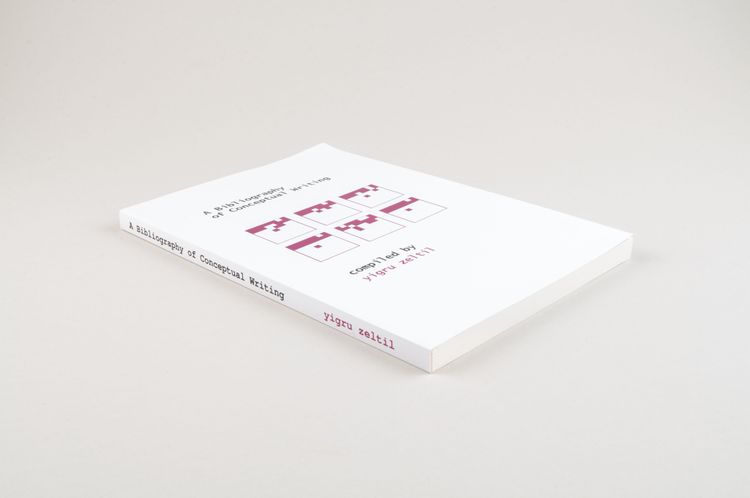A Bibliography of Conceptual Writing collects around 1,100 entries of analog and digital publications that the editor yigru zeltil labels as conceptual. Initially started as a list on Goodreads and later turned into a blog, the book format was chosen as “stable reference,” because “a Blogger page or even any other kind of Web page may never be as safe as a printed format” (yigru zeltil, “note,” 7).
Yet, the potential incompleteness of such a list, being based in a certain period of time, as well as a changing definition of “conceptual” and the accessibility of books online and offline in general, also required the possibility to alter or update the content later. This makes print-on-demand the perfect vehicle for such a project and is represented by a version number attributed to the release, similar to software releases and their update histories. After v1.00 of the book couldn’t be uploaded to Lulu due to formatting issues, v1.01 is the first available release, with minor changes and additions to the list. “In spite of many of these books being digital and/or print-on-demand or simply (nearly) impossible to obtain (anymore), it can indeed serve also as a ‘shopping list’” (yigru zeltil, “note,” 7).
In contrast to the blog which is sorted by date, the book sorts all entries alphabetically by author name. This focus on author rather than time corresponds to the editor’s motivation to get in touch with artists that are on the list, making it a personal and political endeavor: “it could be said that this is an excuse for me to network with the authors I am going to translate or attract some attention for my own poetic projects (most of them due to be released in the near or distant future) and I’m not denying it—being yet another Romanian poet trying to get away, at least for a while, from the conservative culture…” (yigru zeltil, “for/word,” 14f.).
These considerations and motivations are reflected on in a release “note” and a “for/word” accompanying the list. In the “note,” readers are encouraged to compile or publish their own, better bibliography. The cover design is based on derek beaulieu’s The Duchamp Opening (2016, no press).
